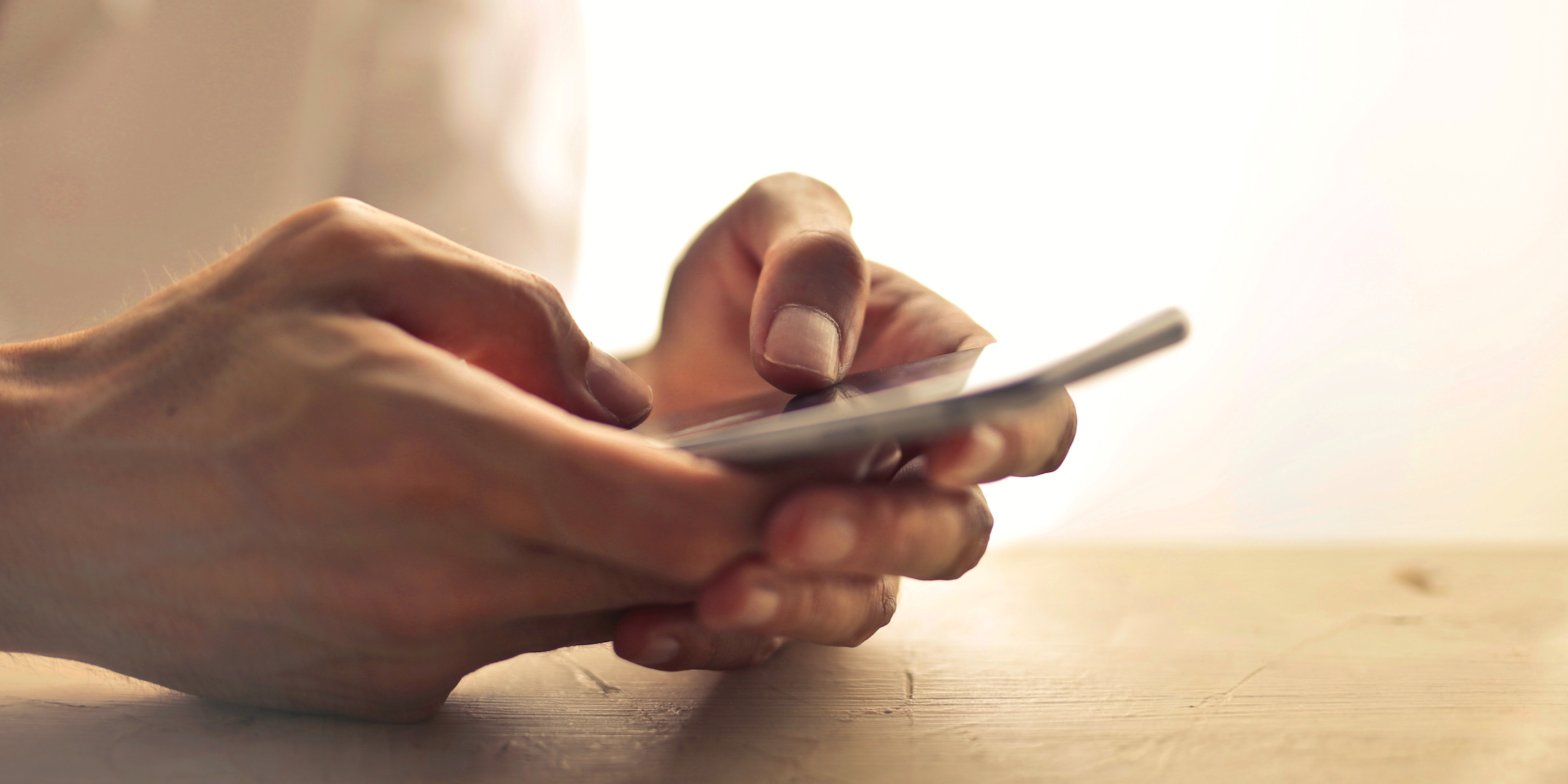It’s hardly a surprise that researchers are linking smartphone use to anxiety, depression, addiction, and overall poor mental health. Smartphones (and glowing pixelated screens of all kinds) are increasingly seen for what they are: a mounting health and wellbeing crisis. This article explores the phenomenon of phone-induced anxiety and includes guided smartphone meditation practices.
The Mechanisms Of Phone-Induced Anxiety
Mindful vs Mindless Use
Long before smartphones, meditation practitioners understood the importance of strengthening the ability to sustain calm, focused awareness in the face of endless mind chatter and external distractions. Today, we could not face a more formidable intrusion into our conscious awareness than being constantly attached to our devices.
It’s all a question of awareness. Smartphones can be used mindfully, as the incredibly useful tools they are; our phones can help us connect, simplify our lives and give us instant access to information. But when used mindlessly, phones lead us down the path of distraction and addiction, compulsively feeding our own anxiety.
Technology merely advances; it never asks whether an app or device should be created, only how it can be done. It’s up to us to practice discernment. By taking conscious control over our time and attention, we decide the appropriate place for technology in our lives.
Read more: Mental health rates are on the rise for young people. Learn about the impact of social media on youth mental health.
The Zeigarnic Effect & The Weight Of “Incomplete Tasks”
Lithuanian psychologist Bluma Zeigarnik described an effect in the 1920s that has now become known as the Zeigarnik effect.
Essentially, she wondered why waiters in a restaurant were so good at remembering complex orders while the order wasn’t yet fulfilled, but promptly forgot everything once the customer was served. Countless research studies later and we now understand that the brain prioritizes unfinished tasks, creating anxiety that’s only released when the outstanding task is completed.
Simply put, cliff-hangers, unresolved problems and things perceived as outstanding hold our attention captive.
Our smartphones can be thought of as devices that bombard us with a stream of these never-ending “incomplete tasks.” The kind of psychic tension created by the weight of all those unread messages, updates, and new content creates unease and the compulsive attempt to complete the task—i.e. check the phone. Unconsciously, we’re “nagged” by devices, anxious that no matter what, there’s always some fresh demand on our attention.
Dr. Nancy Cheever has researched phone-induced anxiety and finds that our phones can trap us in reinforcing anxiety loops, where the only relief is to look at the phone again. Unfortunately, our phones never take a break–it’s up to us to consciously empty our minds and step back periodically, telling ourselves, “I’m finished for today.”
How To Overcome Phone-Induced Anxiety
Whatever you use your smartphone for, remind yourself that with conscious intention, you can decide what you want to do with your time, your energy, and your awareness. Anxiety, addictive behaviour and distraction all have one thing in common—they bypass the present moment.
When you mindlessly reach for your phone, you get to escape the moment and all its uncomfortable feelings. Essentially, it’s anti-meditation, where you train your brain to crave and attach to distractions rather than let them go by without identification and losing awareness.
A Smartphone Meditation
Can we instead use this near-constant impulse to engage with our phones to our benefit? Try attaching a sticker or Post It note to your phone’s screen. This is a little “meditation bell” to wake you up to consciousness again. Instead of picking up your phone, stop, take a breath and see where you are:
- Is there something you’re avoiding in the present?
- Is what you’re about to do really going to enrich your life?
- Are your actions in this moment conscious and proactive or are they reactive and mechanistic?
Being aware, you can take mindful action that’s in line with your values. Set an intention (“I’m going to check this email, then put my phone down and carry on doing what I was doing before I was interrupted”) and notice how it feels to engage with your phone with deliberation rather than compulsion. Try to see what happens if you simply sit with the urge to fiddle with your phone without capitulating. Ask yourself, what purpose is the phone serving right now—is it enhancing your conscious agency or restricting it?
Before reading on you might want to practice one of these meditations that help to overcome digital distractions and establish mindful digital boundaries:
- Detox Your Digital Mind Laura Thorne 8:44
- Mindfully Using Our Smartphones Neil Tranter 21:33
- Digital Wellness: Calmness Is Strength Pete Dunlap 9:15
- Digital Detox Challenge Tony Samara 39:23
Establishing & Enforcing Digital Boundaries
There are porous barriers between your state of mind and the noise and bustle from the eternal world. It’s the job of your conscious awareness to police that boundary, protecting that space according to what you value and want to focus on, not whichever distraction in your environment makes the most noise.
Make conscious choices about which stimuli you are going to allow “in.” Your device is there to serve you, not the other way around! If you feel anxious and frustrated with your phone, set it aside and tune in for a moment to what you want. To start, set some more physical boundaries:
- Keep your phone out of your bedroom at night.
- Put your phone away when in company.
- Set your phone to silent when doing important tasks.
Practicing Responsible Content Consumption
The trouble with compulsive, automatic behaviour is that it doesn’t give your higher self a chance to weight in. Before you’ve decided whether a piece of content is really aligned with your highest good, you’re carried along with it. Part of maintaining healthy digital boundaries is also being mindful of the kind of content you take in.
Sadly, the modern world monetizes distraction and powerful corporations pay marketers enormous amounts of money to harness and then direct your attention for their profit. Understand that emotionally charged content—anything that saddens, outrages or scares you—is purposely designed to manipulate you and seize your interest and participation.
Read more: With constant access, push notifications and reminders of wars, traumas, climate emergencies, harassment and violence, more and more people are conjuring less emotion when confronted with startling and shocking images and news. Learn more about compassion fatigue.
Take note of the material you’re putting into your heart, mind and soul. Are you drawn to catastrophic and hopeless news stories? Enraging political content? “Inspirational” material that only leaves you with a dull sense of shame and anxiety? Or perhaps your phone is a window into social media and the well-known stresses and strains that come with it.
Notice how such media use really affects you and you’ll soon put your phone down and become curious about how you can genuinely meet your needs for connection, meaning and comfort. Is your posture, tight muscles or shallow breathing a sign that the content you’re taking in doesn’t ultimately serve you? On the other hand, if you’re the one creating and sharing content, from social media engagement to family phone calls, stay aware of whether your words are truly benefitting you or others.
In the end, you are the one who decides what role technology plays in your life, and why. The only thing you need to do is pause, align with your deepest values and desire, and act decisively. Once you do so, every tool in your world can be seen for its potential value in enhancing your life, rather than diminishing it.
Read more: If you feel like you are trapped in the loop of phone-induced anxiety, you might also want to explore these seven principles for conscious digital device usage that help to make mindful decisions.







